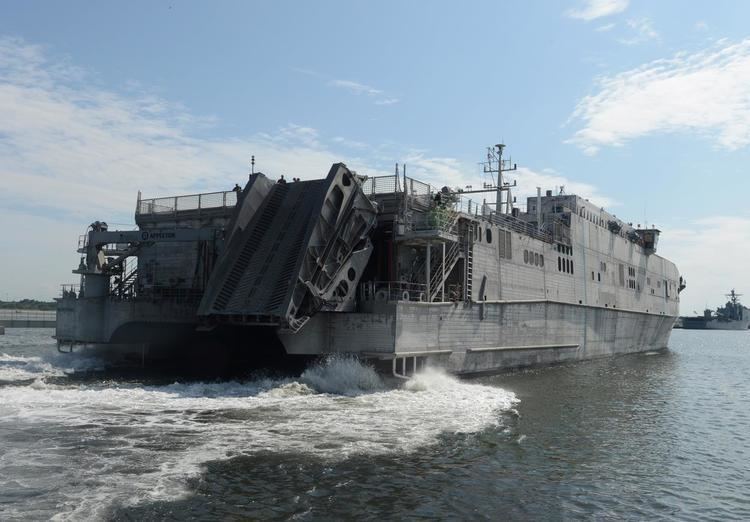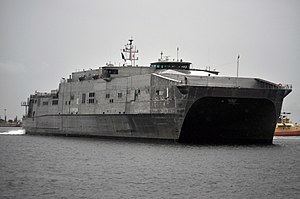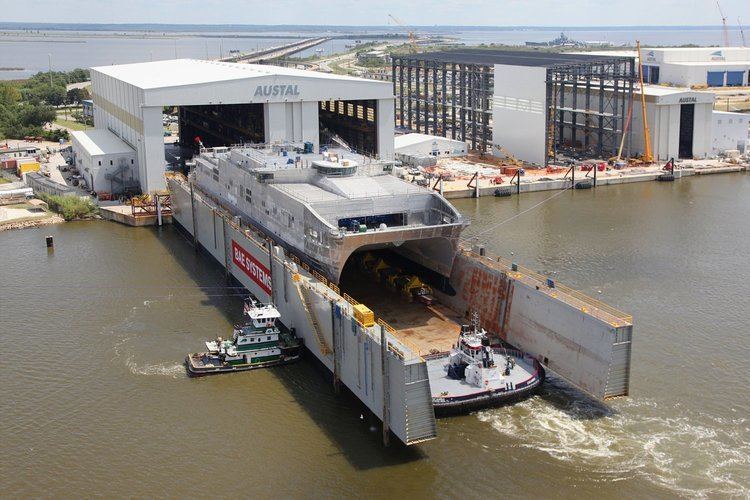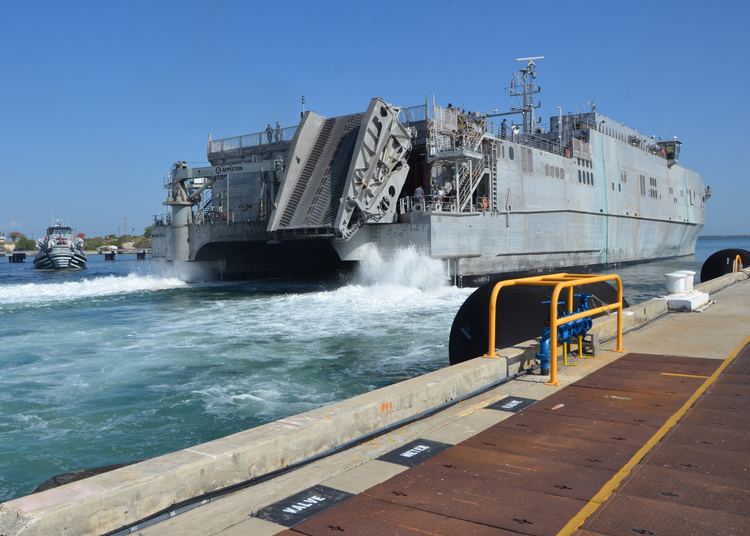Name USNS Spearhead Christened 17 September 2011 Status in active service Launched 12 September 2011 Builder Austal USA | Laid down 22 July 2010 In service 5 December 2012 Construction started 22 July 2010 Length 103 m | |
 | ||
Operator Military Sealift Command | ||
USNS Spearhead (T-EPF-1) (formerly JHSV-1) is the first Spearhead-class expeditionary fast transport to be operated by the Military Sealift Command. USNS Spearhead was christened on 17 September 2011.
Contents

History

Construction of Spearhead began on 22 July 2010, when the ship's keel was laid at the Austal facility in Mobile, Alabama in a ceremony that included officials from the US Navy, the US Army, the state of Alabama and the city of Mobile. At the time, Spearhead was intended for service with the US Army in the 7th Sustainment Brigade as USAV Spearhead.

Spearhead was launched on 8 September 2011, though she did not enter the water until several days later; her launch was the moving of the vessel from the shed where she was constructed onto a floating drydock. At the time, she was scheduled to be delivered to the Navy in early 2012, a delay from the original target of September 2011.

Spearhead was christened on 17 September 2011. Her sponsor was a former army officer, Kenneth Wahlman; as part of the ceremony, his daughter Catherine Wahlman (Virginia Polytechnic Institute and State University Corps of Cadets class of 2013) broke a bottle of champagne across Spearhead's bow. Spearhead, after delivery to the Navy in early 2012, will undergo sea trials and tests, and in the first quarter of fiscal year 2013 is planned to begin operations, homeported at Naval Amphibious Base Little Creek. She will be crewed by civilian sailors from the Military Sealift Command, and her first captain was Douglas D. Casavant, Jr.
In August 2012 Spearhead made a "clean sweep" of her acceptance trials.

Spearhead was formally delivered to the Navy on 5 December 2012, eight months late and $31 million over budget. She made her first deployment to Europe and Africa in early 2014, followed by a trip to Latin America.
On 7 March 2014, Spearhead visited Liberia, where marines conducted a rigid-hulled inflatable boat drill.

On 12 June 2014, the Spearhead was conducting routine testing off the coast of Key West. In the early morning, lightning struck an aerostat that was tethered to the vessel. The strike caused the aerostat to deflate and land in the water, where it sank.
During operations in 2015, Spearhead experienced bow-damage from rough seas requiring more than a half-million dollars (USD) to repair. It was determined that a design change that Austral recommended to the Navy late in the design phase to save weight has resulted in a weakened bow structure. The first five ships in the class will need to be returned to Austral to have upgrades done to improve the superstructure, at a cost of $1.2M each. The remaining ships which are still various stages of construction will be upgraded as well.
Role
Spearhead, as well as other ships of her class, are built to a modular design that allows them to be rapidly refitted with various equipment within a 20,000 square feet (1,900 m2) bay depending on the mission at hand. Spearhead is planned for non-combat missions, such as transportation of troops or equipment.
Specifications
Spearhead is 103 metres (338 ft) long and 28.5 metres (94 ft) in beam, and has a draft of 3.83 metres (12.6 ft). She has space for 41 crewmembers, though under normal conditions will sail with 22, as well as sleeping accommodations for up to 150 people and an additional 312 seats for troop transport. She is powered by four MTU 20V8000 M71L engines, each with a power of 9.1 megawatts (12,200 hp), driving four Wärtsilä WLD 1400 SR waterjets through ZF 60000NR2H reduction gears. This allows for a maximum speed of 43 knots (49 mph) and a service speed of 35 knots (40 mph). There are also facilities for one helicopter.
